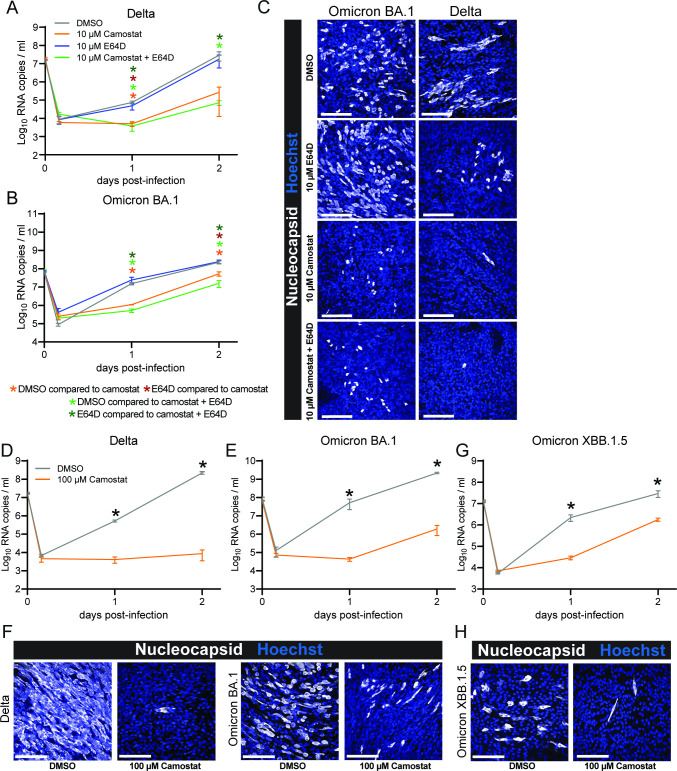Fig 6.
Omicron uses the TTSP-mediated entry route in air-liquid interface human airway organoids. (A and B) Replication of Delta (A) and Omicron BA.1 (B) in the presence of dimethyl sulfoxide (DMSO, vehicle), camostat (10 µM), E64D (10 µM), or the combination of camostat and E64D. (C) Representative images of 2 days post infection air-liquid interface human airway organoids from panels A and B stained for nuclei with Hoechst (blue) and stained for virus nucleocapsid (white). (D and E) Replication of Delta (D) and Omicron BA.1 (E) in the presence of DMSO (vehicle) or camostat (100 µM). (F) Representative images of 3 days post infection air-liquid interface human airway organoids from panels D and E stained for nuclei with Hoechst (blue) and stained for virus nucleocapsid (white). (G) Replication of Omicron XBB.1.5 in the presence of DMSO (vehicle) or camostat (100 µM). (H) Representative images of 2 days post infection air-liquid interface human airway organoids from panel G stained for nuclei with Hoechst (blue) and stained for virus nucleocapsid (white). Groups were compared by two-way ANOVA. *P < 0.05. Error bars depict SEM. Panels A–B, D–E, and G indicate three technical replicates. A representative from two independent experiments is shown.

